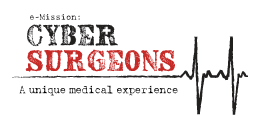Pennsylvania Science Standards
Academic Standards for Science and Technology
http://www.pde.state.pa.us/k12/lib/k12/scitech.doc
10th grade
Unifying Themes
Apply the elements of scientific inquiry to solve problems.
• Generate questions about objects, organisms and/or events that can be answered through scientific investigations.
• Evaluate the appropriateness of questions.
• Design an investigation with adequate control and limited variables to investigate a question.
• Conduct a multiple step experiment.
• Organize experimental information using a variety of analytic methods.
• Judge the significance of experimental information in answering the question.
• Suggest additional steps that might be done experimentally.
Biological Sciences
Explain the structural and functional similarities and differences found among living things.
• Explain the relationship between structure and function at the molecular and cellular levels.
Describe and explain the chemical and structural basis of living organisms.
• Describe the relationship between the structure of organic molecules and the function they serve in living organisms.
• Identify the specialized structures and regions of the cell and the functions of each.
• Explain how cells store and use information to guide their functions.
• Explain cell functions and processes in terms of chemical reactions and energy changes
Science, Technology and Human Endeavors
Analyze the relationship between societal demands and scientific and technological enterprises.
• Identify past and current tradeoffs between increased production, environmental harm and social values (e.g., increased energy needs, power plants, automobiles).
12th Grade
Unifying Themes
Apply the elements of scientific inquiry to solve multi-step problems.
• Generate questions about objects, organisms and/or events that can be answered through scientific investigations.
• Evaluate the appropriateness of questions.
• Design an investigation with adequate control and limited variables to investigate a question.
• Organize experimental information using analytic and descriptive techniques.
• Evaluate the significance of experimental information in answering the question.
• Project additional questions from a research study that could be studied
Biological Sciences
Explain the relationship between structure and function at all levels of organization.
• Identify and explain interactions among organisms (e.g., mutually beneficial, harmful relationships).
• Explain and analyze the relationship between structure and function at the molecular, cellular and organ-system level.
Analyze the chemical and structural basis of living organisms.
• Identify and describe factors affecting metabolic function (e.g., temperature, acidity, hormones).
• Evaluate metabolic activities using experimental knowledge of enzymes.
• Evaluate relationships between structure and functions of different anatomical parts given their structure.





